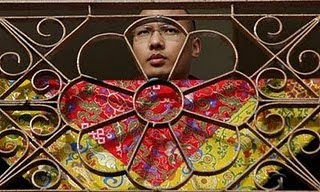转贴:加拿大人身份认同危机---和事佬或战士?
 |
| 在Michael Valpy看来,在加拿大濒临大西洋的Cape Breton建设加拿大母亲像是加拿大人战士身份的一部分 |
Peacemaker or warrior? Canada faces identity crisis
Today’s Warrior Canada is the product of baby-boomers trading in their one-time open cosmopolitanism for a vision of a darker world.
In a private letter to Pierre Trudeau just before he became prime minister in 1968, the brilliant diplomat and public servant Allan Gotlieb wrote possibly the most lyrical piece of Canadian mythology ever crafted.
“To many Canadians, Canada has a moral obligation to help solve the problems of the world,” went his letter. “Our culture, our character, our geographic location, our prosperity — all these and other factors have been thought to combine to endow us with a special role in helping to bring peace and sanity to the world ...”
And then came the angels’ anthem: “Like the Danes who made good furniture, the French who made good wine, the Russians who made sputnik, Canada, as a specially endowed middle power, as the reasonable man’s country, as the broker or the skilled intermediary, made peace.”
Like the Danes who made good furniture, Canada made peace.
The word “mythology” doesn’t mean “fabrication,” “false” or “untrue.” Rather it is something we believe to be true about ourselves at some profound level of our beings whether or not the belief is supported by history (which in itself is always contingent upon interpretation from the present). It is what binds us together, presents us with our nation as the community of our imaginations. Or fractures us.
Thus Gotlieb’s words came to mind, hearing Prime Minister Stephen Harper’s Canada Day speech about the “heroes who defend this country, our Canadian Armed Forces personnel.”
Said Harper: “In the Baltic and in Eastern Europe, they are supporting our friends and allies who face Russian aggression. And in Iraq and in Kuwait, they are fighting the terrorists there, to keep us safe here.
“Now, friends, as we saw right here in our Parliament, this threat is everywhere today.
But we have faced great threats before, many times, and we have overcome them.
“And we shall overcome them once more. So, let’s hear it for the brave men and women of the Canadian Armed Forces!”
Not peacemaking Canada. Warrior Canada, a mythology we’ve had with us for at least the past decade, now linked with the proposed Victims of Communism monument (strong Canadianism is always associated with emotional investment in some anti-ism) and the 30-metre-high proposed Mother Canada statue on Cape Breton gesturing to dead Canadian warriors across the Atlantic and the new War of 1812 monument on Parliament Hill and the weird Valiants Memorial on Confederation Square.
Which mythology speaks to our true identity? The answer is they both do — the peacekeeping mythology is deeply embedded in the Canadian psyche but the mythology of aggressive masculine virility, primarily in anglophone Canada, has deeper psychological roots — and there is nothing abnormal about a contested terrain of public or collective memory.
Take, for example, Mother Canada, a knock-off of the allegorical figure of Canada Bereft that stands before the national First World War memorial in Vimy, France.
The Mother Canada advocates talk about a tribute to “Fallen Heroes” that “will ignite a new level of inspiration and passion within all Canadians ...” Sculptor Walter Allward’s Vimy Memorial, on the other hand, is anything but a celebration of warrior heroes — it is a prayer that a new world of Justice, Peace, Faith, Hope, Honour and Charity (his idealized figures hovering above Canada Bereft) will rise up from the catastrophic horror of a pointless war that took more than 60,000 Canadian lives.
Today’s Warrior Canada is the product of aging baby-boomers trading in their one-time open cosmopolitanism for a vision of a darker world and the need for a more secure society, plus the government’s skilful public presentation of the Armed Forces via Operation Connection launched in 2006 — making them visible at sports events, concerts, rural and urban fairs, warrior-celebrating black-tie gatherings and downtown teenage hangouts like Toronto’s Dundas Square.
But while Harper gets P for Perseverance, polls like EKOS Research’s survey of national values find the vast majority of Canadians see our military missions as having achieved zero net gains and are more likely to have moved the yardsticks back from the goals of a more secure North America and more democratic and productive Middle East.
We’re a country that’s lost mythological traction about who we are.
十年前,一位多伦多商人萌生了在布雷顿角高地国家公园竖立一座24米高雕像的想法:一位悲伤的母亲向欧洲伸出双臂,以纪念加拿大在战争中的死难者。纪念加拿大人在世界的作为,欢迎在海外死去、无法回家的加拿大人的灵魂回来。 雕像的推手是托尼·特里贾尼(Tony Trigiani)和永不遗忘国家纪念基金会(Never Forgotten National Memorial Foundation),该基金会计划筹集2500万元来建造“加拿大母亲”Mother Canada雕像。哈珀的保守党政府批准该项目并提供了10万元。后来雕像被压缩到不足20米高,2016年2月自由党上台后,干脆停止了该项目。


评论
发表评论